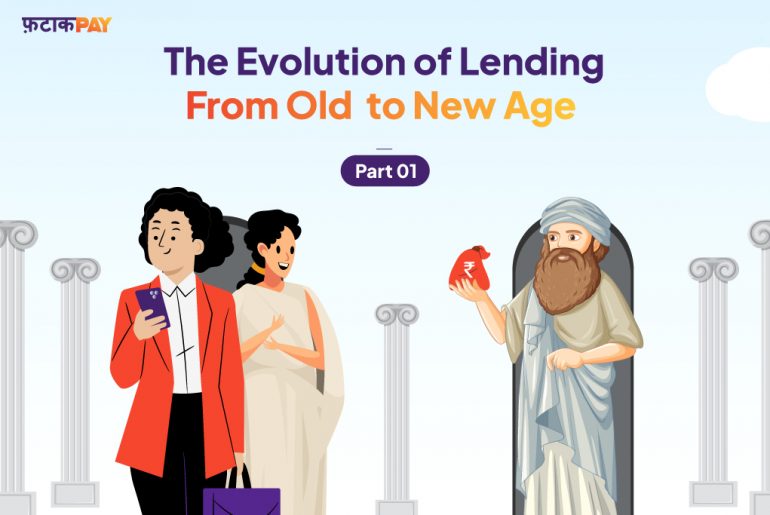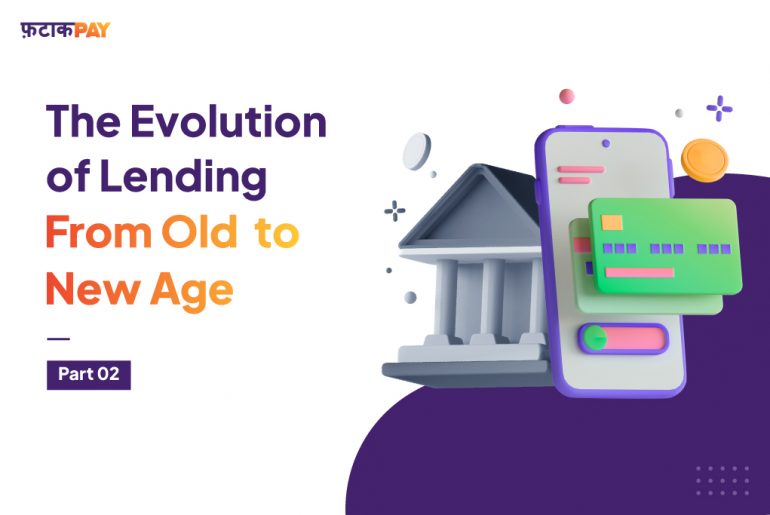Introduction to Lending:
Lending is an age-old practice that has been a part of human civilization since ancient times. In the process of Lending, an individual, a group (public or private), or a financial institution makes funds available to a person or business with the expectation that the funds will be repaid. The concept of lending has undergone a massive evolution over the centuries, from the days of barter trading to the modern-day fintech lending platforms. In Part 1 we will cover Lending in the Ancient and Middle ages.
Lending in Ancient India:
Business loans were common in ancient India, and despite popular belief, the banking system was thriving long before the British empire was established.
The Vedas and Manusmriti make allusions to a variety of lending techniques. Moreover, terminology for interest on loans like kusida, vardhusa, vridhi, and vyaja are used in Sanskrit texts.
One of the earliest ever recorded examples of a bill of exchange was in India. The Maurya
dynasty developed letters of credit which also helped issue bills of exchange to foreign
countries for sea-borne trade.
Loans have been given out since the fifth century B.C. in both cash and kind. As it was unethical to offer exorbitant rates, texts authored by Baudhyana, Gautama, and other lawgivers make reference to the interest that may be imposed on such loans.
Lending in the Middle Ages in India:
Under the rule of the Mauryas, a systemic lending framework was established in 321 BC. The Arthashastra of Kautilya has thorough references to bill of exchange suppliers who aid traders in conducting international trade.
In addition to discussing business loans, Dharmashastra also made caste a crucial consideration in money lending. It only allowed the Vaisyas to practise money lending and demand higher interest rates from borrowers from lower castes.
Dastawez, a novel method of lending money, gained popularity during the Mughal dynasty.
Dastawez-e-indultalab and Dastawez-e-miadi were terms for business loans that were due immediately and later, respectively. Moreover, advance loans, also known as taqavi, could be obtained by peasants through the Diwan’s office.
Lending in Ancient Mesopotamia:
Money Lending took place in Ancient Mesopotamia around 3000 BC. Ancient Mesopotamia, which is now part of the Middle East, was inhabited by a wide range of peoples, including the Sumerians, Babylonians, Assyrians, and Persians. These ancient peoples paid their debts with food before fiat money became commonly utilised. Farmers would borrow seeds and then share their produce to pay off their debts with the promise of a spring harvest.
The Code of Hammurabi contains examples of borrowing and lending in agriculture. More precisely, these antiquated regulations for both grains and silver attracted interest. The Code stated that a lender could only charge a maximum annual interest rate of 33%.
Let’s have a look at some of the Babylonian laws in the Code of Hammurabi:
Example 1
48. If any one owe a debt for a loan, and a storm prostrates the grain, or the harvest fail, or the grain does not grow for lack of water; in that year he need not give his creditor any grain, he washes his debt-tablet in water and pays no rent for this year.
If the harvest was wrecked by a lack of water or for any other reason, the borrower would not be required to repay the obligation, wiping his debt-tablet clean. You could say that the Babylonians were fairly reasonable.
Example 2
117. If any one fail to meet a claim for debt, and sell himself, his wife, his son, and daughter for money or give them away to forced labour: they shall work for three years in the house of the man who bought them, or the proprietor, and in the fourth year they shall be set free.
This is a severe, albeit old-fashioned, appearance of collateral. Due to this law, the person may offer his wife or child as collateral to their lender, or else the person would be required to work for three years for the proprietor before settling their debt.
Lending in Ancient Greece:
The practice of lending had spread west of Mesopotamia. Since it made sense for a lender to make a profit after putting his money at risk, the idea of interest was widely accepted in ancient Greece. Lenders were frequently held in high respect in society because they were willing to take a financial risk in order to promote trade and the economy.
Ancient Greece had interest rates that were lower than Mesopotamia’s, with a general cap of 12% and mortgages and larger loans having rates closer to 16% and 18%, respectively. Nevertheless, there were strong familial values that supported interest-free borrowing because it was considered humiliating to charge your family money.
Pawnbrokers used to lend money in exchange for objects that would be maintained as security or collateral, lowering their risk. This is the origin of secured lending.
Lending in the Middle Ages in Europe and Middle East:
Religion played a crucial part in condemning the practice of lending money at interest as the Qu’ran, the Bible, and the Torah only permited Jewish people to lend money at interest to non-Jews, respectively,Particularly in early Islamic texts, interest was regarded as unjustified revenue.
Usury was also prohibited in the Bible, especially when it involved lending to the poor and charging them interest. This made lending money during the Middle Ages a controversial subject. Although loans were necessary to support trade and the economy, the Church ultimately posed a significant barrier to the establishment and operation of banks.
If we were to summarise this, Lending was outlawed in this scenario.
Additional Links:
This concludes part 1. We hope you enjoyed reading the blog. Stay tuned for part 2 🙂
In the meantime you can check out our other blogs and LinkedIn articles.
https://fatakpay.com/blog/what-is-credit-risk/
https://www.linkedin.com/pulse/what-assurance-fatakpay/?trackingId=xZ36F9PEYmSp%2F39MqqfAjA%3D%3D
About FatakPay:
FatakPay provides virtual credit facilities for all. It’s available on your phone and caters to your everyday needs in both online and offline format. Payments are done seamlessly through UPI/QR codes. The solution provides an almost zero cost, free, quick, transparent and a secure way to transact in multilingual format with a Scan Now Pay Later facility and easy repayment options.
Link to FatakPay App: https://link.ftkp.in/2uSI/dkasgvnf







